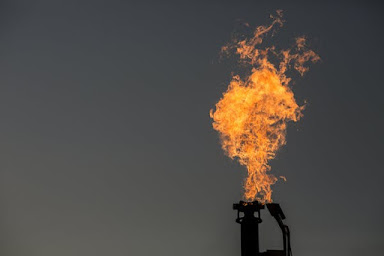Unapproved ducting might discuss high flaring quantities
Nearly all flares are open up burning resources. They could be spotted from area as brilliant, fixed-location warm radiation resources. Researchers have established formulas to brochure this glowing warm and associate it to the reported quantity of gas flared worldwide.
With the assistance of undergraduate trainees, sociologist Kate Willyard and I assessed information from the satellite-based Noticeable Infrared Imaging Radiometer, or VIIRS. We determined flaring quantities in both Texas shale oil manufacturing areas, both on a per-wellpad and per-county basis. We after that contrasted it to a data source from the Texas Railway Compensation, which controls oil and gas manufacturing, for the years 2012-2015, and discovered big inconsistencies in between both datasets.
In overall, the quantities reported in the specify data source were just about fifty percent of what the satellite observed. One more, much less outlined mass evaluation by the research study company S&P Worldwide discovered comparable inconsistencies for shale areas in Brand-new Mexico and North Dakota.
These big distinctions might be discussed by coverage mistakes and by a number of flare procedures that are just excuseded from quantity coverage. However we think that there's a much more systemic, ordinary description: ducting – the straight launch of raw gas to the environment.
Ducting gas is enabled just for a little establish of procedures in the market if it could be done securely. It's typically restricted since it produces hydrocarbons, consisting of air toxics such as benzene that could trigger cancer cells, birth problems or various other major health issue.
However ducting primarily produces methane, which adds to worldwide warming and atmospheric ozone development. Ducting from flare heaps is unlawful, because the flare is thought about a squander therapy center, however the exercise obviously has enhanced in time. Keunggulan Ayam Pakhoy

Current, higher-resolution satellite dimensions of atmospheric methane over the Permian container expose that its discharges should be considerably greater compared to what is regularly reported to the Ecological Security Company, surpassing 3% of manufacturing rather than the much a lot extra generally presumed 1-2%. Additional methane unlawfully vented with flare heaps would certainly wind up in the Texas Railway Commission's data source, however satellites searching for warm radiation from burning would certainly not spot it.
[Deep understanding, everyday. Register for The Conversation's e-newsletter.]
That warm radiation is exchanged flaring quantities, utilizing overall reported quantities to companies across the country. However if a a lot smaller sized quantity is really flared, with a few of the gas not combusted however vented, the satellite information would certainly overestimate flaring. This is an issue since researchers and the Globe Bank's no flaring effort utilize these satellite-based flaring approximates.
